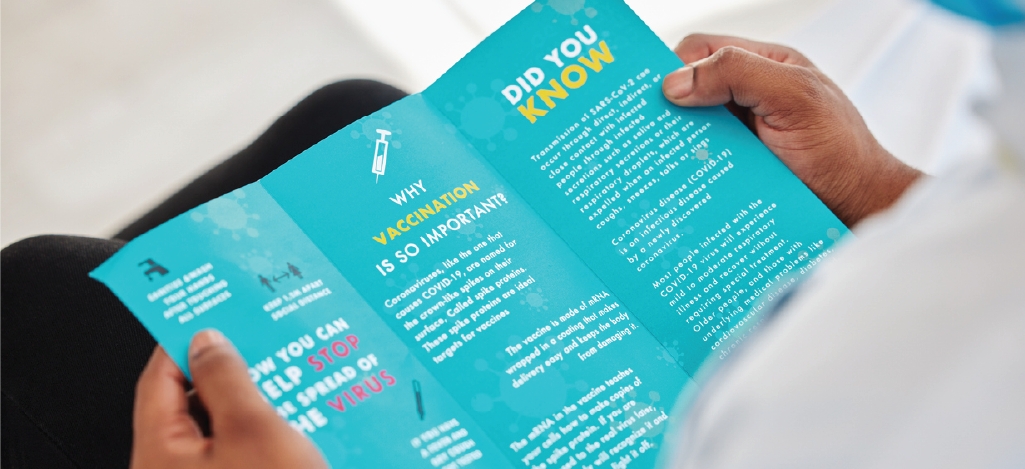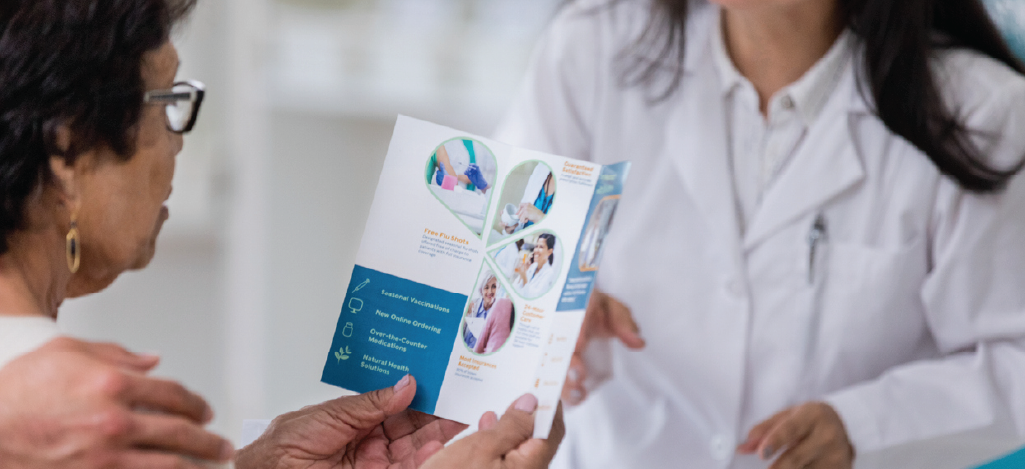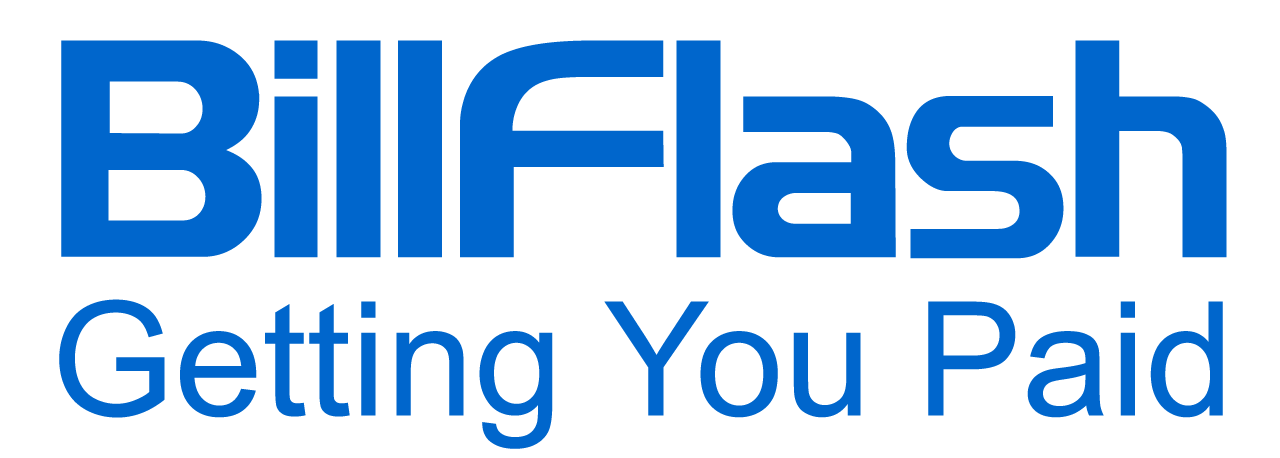Patient mailed statements that include inserts can enhance communication and improve patient-provider relationships.
Building a strong relationship with patients is crucial in healthcare. It's about far more than just excellent medical care, it is also about maintaining a consistent, open line of communication. In an industry where providers have to keep patients informed about new policies, procedures, and treatment options, communication through patient statement inserts is an effective way to deliver this information cost-effectively—after all, postage is already paid for mailing the statement.
Statement inserts are supplemental notices or updates printed and mailed along with monthly billing statements. They can convey anything from basic policy change notifications to important educational details on new therapies. The beauty of inserts lies in their ability to reach each patient through an existing communication channel.
In this post, we'll explore three key ways inserts can enhance a patient mailed statement: by providing valuable educational materials, offering promotional or informational content, and improving the overall patient experience. Ultimately, we'll see how these three elements elevate communication while fostering patient engagement and satisfaction.
Providing Relevant Educational Material
Despite the rise of digital communication like email and social media, traditional printed mail remains highly impactful for effective patient outreach. This may seem surprising, as one might assume digital platforms dominate. However, patients tend to place greater importance on physical mail versus electronic messages.
The physical nature of inserts forces patients to physically hold the content in a way that email easily gets lost or ignored in inboxes that already have an overflow of unread messages. Print materials can easily command more attention and credibility. Patient statement inserts can be a great way to empower patients with details about their health conditions, treatment options, and healthcare resources.
Some examples of relevant educational topics for patients may include:
- In-depth information on chronic conditions such as diabetes or heart disease
- Practical recommendations on how to successfully navigate the challenges of the healthcare system
- Preventive care guidelines and best practices
- Medication management tips and strategies

These inserts can cover a wide array of topics, but the overarching goal is to ensure that patients receive tailored information that aligns with their specific healthcare needs and concerns. More informed patients are better positioned as active participants in their health journeys. They're also more likely to adhere to prescribed medications, openly ask questions, and make healthier lifestyle choices – positively impacting outcomes.
Offering Promotional or Informational Content
Healthcare providers can leverage patient statements as an effective platform to promote an array of services, events, and initiatives catering to their community's needs and well-being. By strategically incorporating appealing inserts, providers keep patients informed about the latest offerings, upcoming health screenings, or outreach programs.
For instance, patient mailed statement inserts could announce a cutting-edge telemedicine service enabling patients to access quality care from home. This innovative approach saves time while reducing barriers to seeking medical attention, especially for those with mobility or transportation challenges. Another valuable insert could invite patients to a complimentary health fair or educational seminar on a specific condition.
Such events empower proactive health management by providing knowledge and tools for informed decisions and positive lifestyle changes. Patient statement inserts introduce new services, showcase provider expertise, or share inspiring success stories highlighting exceptional patient care commitment. Sharing these narratives also fosters trust and credibility, strengthening the patient-provider relationship.
Including promotional or informational inserts goes beyond advertising – it's a powerful patient engagement strategy. Consistently keeping patients informed about available resources and support cultivates connection and loyalty. When patients feel valued and supported, they're more likely to continue care within the same system, improving retention and fostering long-term relationships.

Enhancing Patient Experience With Personalized Inserts
In our age of personalization, healthcare providers have an opportunity to revolutionize patient experiences through personalized statement inserts. By making use of your data from electronic health records (EHRs) and patient portals, highly targeted, relevant content can be generated for each individual.
For example, Max, a patient with type 2 diabetes, could receive an insert with the latest blood sugar management research, personalized diet/exercise recommendations, and info on new treatments. Richard, a knee replacement patient, could get targeted physical therapy exercises, pain management tips, and recovery navigation resources.
But it goes beyond that. Analyzing demographic info, lifestyle habits, and social determinants of health enables even more personalized recommendations. Joyce, a low-income patient, could get info on local community gardens, farmers' markets, and affordable healthy food options. Or Marla could receive guided meditation exercises and local yoga class details.
Delivering highly relevant, targeted content demonstrates a commitment to truly patient-centered care. Patients feel seen, heard, and understood, knowing their provider invests in their unique needs and challenges. This patient statement personalization enhances experiences while driving meaningful health outcome improvements.
Case Study: Vanderbilt University Medical Center
Vanderbilt University Medical Center (VUMC) introduced a new Electronic Health Record (EHR) through a very unique implementation, which involved the introduction of new software. While mainly focused on preparing employees, VUMC also considered impacts on patients and families. Survey data revealed patient satisfaction scores notably declined before, during, and after the EHR implementation.
To address this, a VUMC team implemented a seven-step approach to prepare patients for the transition's impacts. This led to a return to pre-implementation satisfaction scores in about half the time of peer institutions. A key aspect was introducing a new patient portal requiring over 200,000 members to transition accounts.
To ensure patients understood the necessary steps, VUMC employed a direct communication strategy – including informative patient statement inserts. VUMC's approach demonstrated a strategic emphasis on tailoring messaging to patient needs, using clear action-focused language, and delivering information effectively.
Including inserts in bills patients already received ensured reaching the intended audience. The success is evident in VUMC's achieved results. By properly informing and guiding patients through the portal transition process, disruption was minimized while maintaining satisfaction. Their patient statement inserts played a significant role as an effective direct communication tool.

Elevate Communication With BillFlash's Customizable Inserts
Offering patient statement inserts enhances experience and ensures effective communication, especially in diverse communities. Providing educational materials, promotions, or personalized info in a patient's preferred language breaks down language barriers and fosters inclusivity and understanding.
This simple yet impactful step improves health literacy, increases engagement, and ultimately leads to better health outcomes. As healthcare evolves, providers must remain at the forefront of patient communication strategies. By utilizing statement inserts' power, healthcare organizations can improve satisfaction, and loyalty and contribute to better community health outcomes. BillFlash offers affordable patient statement printing and mailing services, with options for including printed inserts with your patient mailed statements. The simple upload process works seamlessly with your existing billing workflow. Ready to elevate your patient communication strategy? Schedule a demo today and discover how our inserts can transform statements into powerful engagement, education, and health outcome improvement tools.

